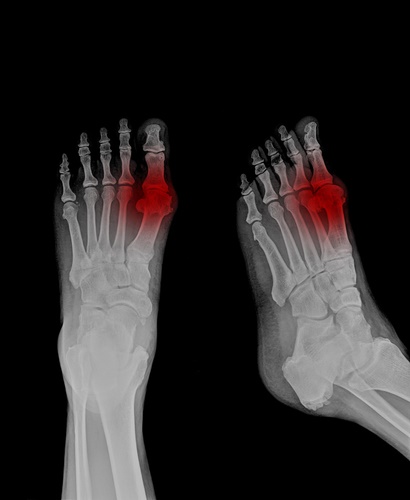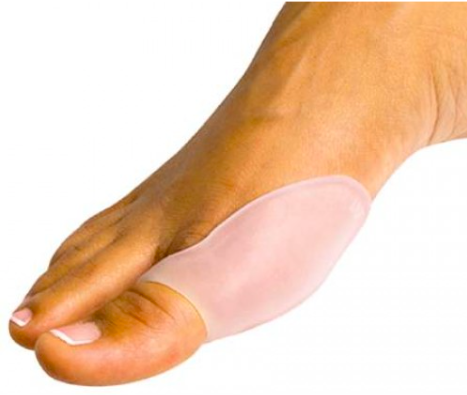
Did you know that nearly one in four Americans suffer from bunions?
Moreover, that number jumps to 35% in those 65 years of age or older. Bunions, also known in medicine as hallux valgus, can be a nuisance, in addition to causing foot pain. This is especially true as the seasons shift away from open-toed to closed-toe shoes, as this condition can make footwear options much more limited.
There are several factors that can influence the likelihood of acquiring a bunion. Most notably, they tend to run in families.
The pain that can result from hallux valgus can prevent you from engaging in your favorite pastimes, or even from wearing your favorite shoes.
If you are looking to discover how to relieve bunion pain, there are some simple steps you can take to improve your situation.
What Causes Bunions?
First and foremost, you may be wondering what exactly causes bunions. As mentioned above, there is a level of inheritance that goes into the condition.
However, there are also a few lifestyle factors that may have led to bunions in your feet. Specifically, bunions can result from the shoes that we wear, or the way that we walk.
Shoes with poor arch support or inappropriate distribution of weight can greatly impact our feet over the course of our lives.
Though shoes do play a role, bunions are mostly a biomechanical problem with the bones in your foot, and can partially be out of your control.
In seeking treatments for this condition, it is important to understand that foot exercises by themselves will not result in the disappearance of a bunion. Rather, they can help decrease the associated pain, and improve your overall flexibility.
How to Relieve Bunion Pain Without Surgery
Here are eights ways to relieve bunion pain without surgery, though surgery can often be the best long-term option.
- Maintain a Normal Weight
A normal weight is essential to overall health, but it can also help with foot pain related to hallux valgus.
Excess weight on the feet can cause even more pain, as well as create a disproportionate amount of weight on certain parts of the foot.
Therefore, consider starting a weight loss program that works for you, as it is a great investment in your body.
- Start Walking More
Walking is associated with countless benefits, from reducing stress to lowering blood pressure.
Better yet, walking is actually a great option for bunion pain, and it can help make you more comfortable with the condition with less pain.

- Protect the Bunion with a Gel Pad
A gel-filled pad can help protect the bunion from additional friction from your shoes and decrease the amount of pain you experience. These are relatively inexpensive, and widely available over-the-counter. They can also help improve the overall weight distribution of your foot.
- Use Special Shoe Inserts
Shoe inserts can be ideal for people whose feet are not positioned correctly. Over time, bunions can result from ill-positioning. Moreover, special shoe inserts can be customized for your foot, in particular to combat specific deformities.
- Buy the Right Footwear
The correct footwear is essential for the ongoing treatment of bunions. Without it, constant pain is inevitable. Therefore, in choosing your footwear, make sure that it is both form-fitting, and wide in the toe area.
This can help protect your foot from further damage, and make it easier to walk and partake in regular activities.
- Consider Anti-Inflammatory Drugs
Over-the-counter, non-steroid drugs can help relieve some of the pain related to bunions by toning down the inflammation.
It is best only to take these when experiencing high levels of pain, as it is not a good idea to take them daily.
However, they are useful to keep in your overall bunion toolkit for particularly painful days.
- Use Helpful Products
There are an abundance of products you can use to treat bunion pain, such as ice packs, warm socks, compression socks, or massagers.
It is a good idea to stock up on these items for bad bunion days. They can help reduce the unpleasant sensation of bunions.
- Engage in Foot Exercises
Foot exercise can be helpful in increasing foot flexibility to improve bunion pain. Some easy beginning exercises include toe stretches, toe flexes, toe contracting, and resistance exercises. Low impact exercises such as swimming, biking or elliptical are advised over high impact activities that involve running, jumping, leaping, and landing.
When It's Time for Bunion Surgery
While it is a generally a good idea to improve everyday bunion pain with at-home methods, many people still would benefit most from bunion surgery.
Because this condition is mostly related to heredity, there is little you can do to remove a bunion without surgery.
Bunions are biomechanical issues that have to do with to shape and form of the foot itself and often result from years and years of habits. Therefore, do not fret if you are considering surgery, as this is a routine long-term treatment option for individuals with bunions.
Even with surgery, it is still a good idea to engage in foot-friendly behaviors to prevent future pain, such as walking and foot exercises. Foot-friendly exercises to relieve bunion pain can go a long way in helping overall foot and ankle stability, which can prevent injuries such as ankle fractures or Achilles tendon injuries.
Bunion surgery is the best option for those experiencing constant, disruptive pain. It is a good idea to have your feet checked out before this happens.
For more information on surgery for foot and ankle conditions, don’t be afraid to contact a medical specialist, who should be able to further answer any questions you have, and will be able to lay out all of your options.







